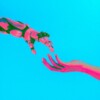In the space of about a year, three big trees fell in middle of the Seattle Pacific University campus. All of these were close to the Tiffany Loop, where we hold an “Ivy Cutting” graduation ceremony under the canopy of branches every June (when weather and pandemics permit).
Each time a tree fell, I’d remember an odd verse I memorized when I was an undergrad. Ecclesiastes 11:3 reads, “If a tree falls to the south or the north, in the place where the tree falls, there it shall lie.” That admittedly obvious bit of wisdom leads, in verse 6, not to fatalism but to diligence: “In the morning sow your seed, and in the evening do not withhold your hand; for you do not know which will prosper, either this or that, or whether both alike will be good.”1
So what happened, happened, and I didn’t think much of the first two arboreal demises, but the third happening made me wonder. Ian Fleming once wrote, “Once is happenstance. Twice is coincidence. Three times is enemy action.” We can rule out Fleming’s brand of enemy action, considering it unlikely that there’s some Bond villain playing a long game by felling trees on campus.
But as I was standing over the third tree to fall, I found it was no coincidence either. I met someone who knew that this can happen, and he told me why it did.
Each tree fell in the middle of a dark and stormy night. The first tree fell on the top of the Student Union Building, buckling the roof of the commuter student lounge. The second tree fell more harmlessly into the open space of the Loop. Losing them was a shame, but mostly I felt relief that no one was hurt (and resolved to glance upward more often while in the Loop).
Losing the third tree felt different. I had grown fond of it, tucked away the northeast corner of the main campus loop, dwarfed and overshadowed by the other trees and by the adjacent Student Union Building. One day, I had exited the Student Union by a small east door, and came face to bark with the trunk of this tree, only feet away. That close, I saw the inch-deep grooves furrowing its bark, and the sunlight through the fractal angles of its leafy branches. It looked like a Van Gogh painting come to life, or a shot from a Terrence Malick movie.
I started to plan my walks through campus to step through that side door and check in with my Van Gogh tree. (Since it has to be said: I fell for it.) Even on hot summer days it was dark and cool in its shade. In the autumn its small leaves lost their chlorophyll and turned bright yellow. A photo on my Instagram dated January 14, 2020 shows its whorls iced white with snow. Its days were numbered at that point: 365, to be precise.
On the morning of January 13, 2021, I was late and had to carry a boxful of supplies for an in-class experiment, so I didn’t walk by my Van Gogh tree. Walking back from class, I saw yellow “caution” tape in that corner, and behind that tape, the crown of that tree crumpled in a heap. High winds the night before had knocked it eastward. At least it didn’t go down without a fight: its leveraged roots had buckled the sidewalk by the wall of the Student Union.
As I stood surveying the damage, I noticed someone else doing the same. He was Scott Baker, a consulting arborist for the university. Scott was, if anything, more attached to this tree than I was. He had been treating it with fungicide to combat Dutch Elm disease and had pruned its branches aggressively to help it hold up against the elements. Sadly, it wasn’t enough.
Standing just outside the tape line, Scott told me this third victim was a wych elm (Ulmus glabra), a European species unique on campus, and possibly unique within a 100-mile radius. He had been trying to keep it upright and alive for at least a decade, which, considering that it had been planted in the 19th century, was a tiny fraction of its lifespan. Scott also found that he was working against a 50-year-old decision that ultimately doomed the tree. I invited Scott to be interviewed about this in Natural Sciences Capstone class a few months later, and we spent an hour talking about how trees combine biology, chemistry, and physics.
At one point, Scott had dug down to expose the root system of the wych elm. There can be more tree below the ground than above: the water-gathering roots extend up to twice the height of the tree, in an inverted mirror to the light-gathering branches. And even a glance from above ground showed this tree was in trouble. It was too close to that east door of the Student Union, and this eventually made it fall.
Scott’s underground investigation revealed two “flare roots” that extended along the building, north and south. To the tree’s west, a wall of river rock had been buried with the foundation when the Student Union was built in the ‘60s. Someone had cared for that tree, but not enough to give it a few more feet of breathing room.
The Student Union foundation had cut through the “root plate” of the tree. As Scott said, it was “put in a pot,” and apparently, wych elms don’t take well to pots. Scott found one root that had wormed its way through the rocks as if in protest, but it was sickly and scrawny, an insufficient anchor against the wind.
The wych elm eked out a few more decades of life by growing roots north and south according to the principle of “minimum strain.” But as Scott put it, “You can’t replace the hundred years of adaptation that was cut away by that building.”
Perhaps the most surprising part of this story is not that the tree fell, but that it held out so long. The catalyst for its toppling may have been related to it environment, as the previous two trees were knocked over one by one. The missing trees formed a diagonal line across the Loop that funneled and intensified the wind.
So a century of winds tugging and underground loosening may have done in the wych elm. Scott told me that there might even be another contributing reason. He had seen yards where the owners would take down just one tree, and a little later, the others would start to die. Some trees are key nodes in the ecological network connecting tree to tree, communicating with chemical signals we are just beginning to figure out. Maybe one of the three trees was like that, orchestrating hidden signals rippling out from now-dead roots.
I’m trained to isolate and disconnect as a scientist. Most of my labwork is in vitro, in test tubes with purified proteins and DNA, but I need other disciplines to understand how these components all work tangled together in complex systems of life and death. If a tree falls, whether in a forest or on a campus, it is not alone. If no man is an island, then neither is a tree.
A fortnight later, by January 26, the tree was dissected, disconnected, and dead. Only the stump remained, sliced a handsbreadth thick. I saw too many tree rings to count, punctured by colored streaks where Scott had injected fungicide. On February 3, a cement mixer sat on the street with a green cab and orange-and-white-striped drum, as the buckled sidewalk was smoothed and replaced. Now there’s a broad path to the east door of the Student Union, with no sign that the wych elm had ever been there other than in old photos of the campus sign.
Scott continues to mind and mend the remaining trees. He’s an early adopter of tech to anticipate tipping and breaking safety, using tools and techniques from new instruments like inclinometers to the age-old method of pulling on the tree. Despite all the tech, it’s still an art to look at a tree and imagine how it is growing relative to the invisible forces of gravity, wind, and soil.
Scott’s work is a true calling with scriptural support. Many passages in the Bible cast the land itself, including trees and subterranean chemical networks, as an important character that deserves consideration, margins, and rest. In Leviticus 26, after Israel’s idolatry leads to war and exile, the land shall “enjoy her sabbaths … because it did not rest in your Sabbaths, when you dwelt upon it.”2 God sides with the land in this dispute!3 Later in the chapter, God remembers four characters—Jacob, Isaac, Abraham, and the land itself4—and retains the covenant “for their sakes.”5 The God who notices when sparrows (and trees) fall to the ground wants us to notice, too.
Our work must be with the grain of nature, not against it, and choices made without considering natural limits are short-sighted at best. The German philosopher Robert Spaemann wrote a 1973 essay titled “Nature” that concludes, “the moment we make the departure from nature in the sense of a progressive mastery over nature an end in itself, we fall back into pure, raw nature.6 But the human race cannot preserve its existence in the manner of a naturalistic, progressive mastery over nature. We genuinely transcend nature only when we preserve it in action as its measure.”7
This arboreal detective story has a moral: you must plan for more than you can see on the surface. If you disregard the unseen roots of the natural world, your actions may have long-term consequences. If, as Fleming said, three times is enemy action, then in this case of campus planning, we have met the enemy and he is us.
But if our negligence can wound the land, our diligence can preserve it. Because we are part of the land, we can choose to invest in it and hope to restore it, using technology as Spaemann proposed: transcending nature by preserving it.
Footnotes
- Ecclesiastes 11:3,6 NKJV
- Leviticus 26:34-35, KJV
- Another example is Hosea 4:3, where “the land mourns,” specifically including the animals, birds, and fish.
- Leviticus 26:42
- Leviticus 26:45
- “Naturwüchsigkeit” in the original German.
- P.33 of Spaemann, R. as translated by Schindler, D. C. “A Robert Spaemann Reader: Philosophical Essays on Nature, God, and the Human Person.” (2015).
























Thank you for sharing.
The tenacity of the Van Gogh tree is a testimony to the strength and wisdom built into Nature. I hate that the tree was essentially “in a pot” but I appreciate its patient, daily probing outward to seek more life.
It dawns on me (as you likely wanted me to realize) that most of us are in a pot. Sometimes the pot is one we were placed into, and sometimes we choose to place ourselves in that pot. Probably for most of us our pot is constructed around us by both ourselves, others, and our external circumstances. The pot can wall off both our overall life situation and even our mind and hinder growth. (Indeed, I am afraid humankind has placed itself into a pot!)
Despite our pot, may we daily probe to seek ways outward to grow!
Thanks for making me ponder all this—your essay is a blessing!
Thanks for the thoughts! From them I start to think about how some “pots” are good and help encourage growth, too. And then about trees and how they developed and evolved over time. Maybe there’s another essay in here …
Nice, thoughtful piece (and peace) reflecting on the OT warnings about “giving the land its rest” that I’ve always noticed.
RIP Grand Old Elm.
Yes, it’s all through the scriptures for those with ears to hear. I’m thinking about how this transformed in the NT as the symbol of the land was reconfigured in the wake of the resurrection. NT Wright had something to say about that, if memory serves.